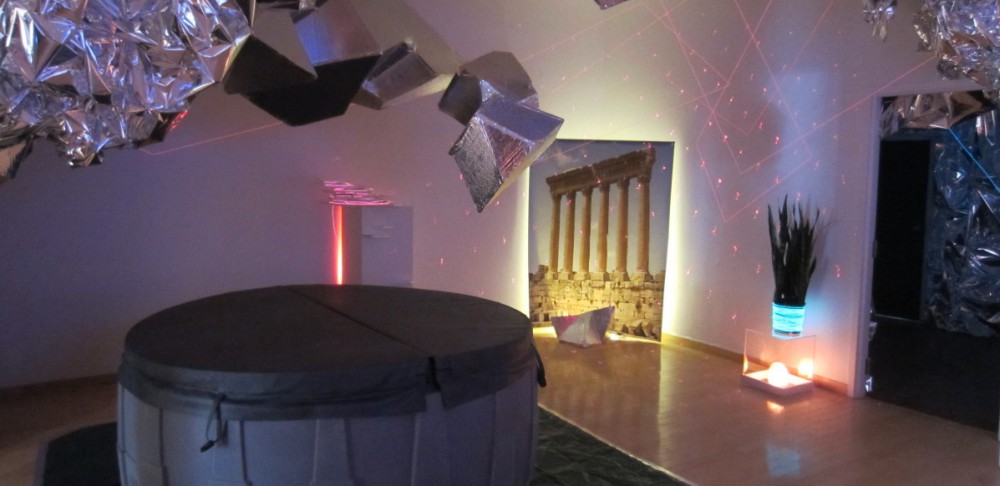How delightfully disturbing is this short story! The casual tone the narrator has throughout, as it mentions the silhouettes left on the scorched side of the house, where a whole family was presumably wiped out in a sudden nuclear blast was slightly disconcerting. Something I really liked from the story was the author’s epic word choice and vocabulary. Here’s an example:
The house was an altar with ten thousand attendants, big, small, servicing, attending, in choirs. But the gods had gone away, and the ritual of the religion continued senselessly, uselessly (p. 2).
In those lines the author tells us the state of abandonment of the house and how it’s mechanized attendants keep working regardless of their masters being absent, but in a very dramatic fashion that adds to the feel of the story.
I found it interesting how the house itself was an entity, and all the automated appliances and mechanized cleaners were all a part of it. The anthropomorphization of the house through the author’s word choice really gives you a sense that it is a sentient being with somewhat rudimentary emotions, for example:
…it had shut up its windows and drawn shades like an old maidenly preoccupation with self-protection which bordered on a mechanical paranoia (p. 2).
We’re told that the house has a sense of paranoia, which in this case would be an artificial emotion that was programmed into it. Surely if the house were actually sentient, it would realize the situation of its masters. At the end I got a sense of despair, after the house burns down and we can still hear its automated voice marking the start a new day.
Compared to the story, the animated short had a much darker feel to it. The creepy, drawling voice of the house’s ‘head robot’, along with the chilling high violin notes only added to a sense of strangeness of it all. The fact that what in the story had been a disembodied voice was now personified by a cold, snake-like automaton that seemed to have a “face” with “eyes” and “fingers” coming out of it only made it that much disturbing.
Out of all the differences between the two versions, one that stood out to me was the ash silhouettes in bed, rather than the blank spaces on the burned side of the house. It makes me feel that something more ominous than a nuclear blast occurred, something so terrible that it vaporized the inhabitants of the house while leaving everything else intact. One of the ash remains still has a watch on its wrist and another one is hugging a teddy bear. Also, the fact that in the movie the date goes from December 31st, 2026 to January 1st, 2027 caught my attention. It happened on New Year’s rather than a random day of the year like in the story.
Finally, it was Sara Teasdale’s poem that tied everything together. The poem tells us of how after mankind perishes due to war, nature will continue its course as if nothing had happened. In the context of the short story and the animated short, thinking all the way to the future of 2026, where mankind has presumably destroyed nature, it will be the machines, the automatons, and the technology that will carry on without noticing mankind’s demise.




I like the you mentioned how the machine is snake-like, because it’s great religious symbolism. It reminds me of how religion was used with technology in Metropolis. Why is it that the machine is snake-like? What was the point of giving the machine that specific form?
Not sure why they chose to make it snake-like, but I did realize that the animation had a lot more religious symbolism than the text. The robot is just one, there’s also the fact that instead of Mrs. McClellan’s “poetry time”, it was her “prayer time”, not to mention the robot stabs her crucifix while rampaging through the house to kill the bird that flew in.
Well, in my opinion making the robot snake-like was meant to make the robot synonymous with evil. In christianity snakes symbolize satan/something evil. This is why it reminds me of Metropolis; it is the same thing the director of Metropolis did by adding satanic imagery when we are introduced to the robot. I agree that the animated short definitely had way more religious content than the text.As for the bird keep in mind that it is a dove, which is heavily associated with christianity, however, what it means, I do not know, but there is certainly something there that I cannot see.
I did not pick up on the machine being described as a living entity, but now that you mention I totally see it. When it begins to burn, we are watching the death of the house. Scary thought.